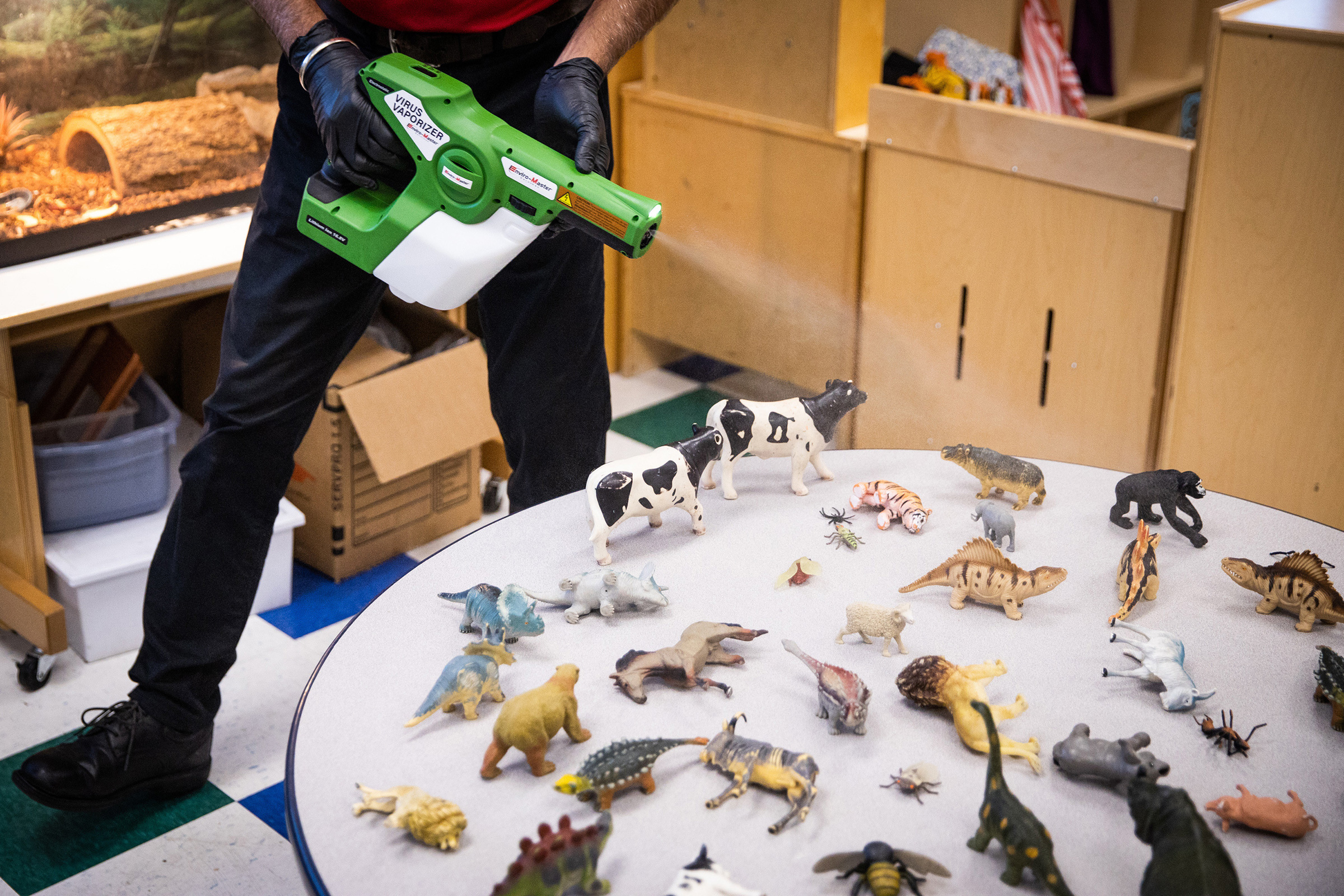
If the highway that connected the residential communities and business district of your town collapsed, the effects on the local economy would be immediate and obvious. If all public transportation were suddenly rerouted away from the office buildings in your town, business leaders and policymakers alike would respond quickly to the predictable ripple effects in the area’s workforce and revenue. It is well understood that infrastructure decisions like public roads and transportation are the foundation on which local economies grow. But an obstacle of similar magnitude is threatening the economic recovery that communities across our country are clamoring for – a shortage of safe, affordable childcare.
It may not be as obvious as a bridge or a tunnel, but ask any parent – including moms like us in Congress — and we will tell you that childcare is just as essential to the productivity of our economy. And the dual crises of pandemic and economic recession has threatened a permanent and dramatic contraction of this vital sector.
Across the U.S., 60% of all childcare providers were forced to shutter completely during the pandemic, costing them months of expected revenue. Those losses are devastating to an industry already operating on extremely thin margins, often without access to reserve capital. And while new pandemic relief programs like the Paycheck Protection Program (PPP) were available to childcare providers, it was an imperfect solution for an industry that rarely is supported by traditional banking. One survey of childcare providers saw reports of systematic denial for PPP loans because of a lack of business checking accounts, despite those not being an SBA qualification requirement.
For months, childcare providers have warned that they don’t have the financial resources to reopen – especially in the face of strict and costly new safety guidelines. Massachusetts requires providers to construct new barriers to create separate spaces, install handwashing stations and purchase additional personal protective equipment. And in Iowa, a survey of providers earlier this year indicated that at least 13% were already not planning to reopen. Providers are struggling to stay afloat – and now that we’ve asked them to do more with less, it shouldn’t be a surprise that we’re facing a wave of permanent closures.
Approximately 76% of moms and 96% of dads with children under age 6 work full-time. If a major tunnel in your town collapsed and kept even close to that many working parents from their jobs, everyone would leap into action. If we do not address this childcare crisis, rebuilding our local economies is impossible.
This looming childcare crisis also falls disproportionately on mothers. According to a Census Bureau survey from July, approximately 31% of women ages 25 to 44 with children have left the workforce because of a lack of childcare, compared with 11.6% of men.
Even before the pandemic came, the rising costs of care were previewing what this crisis could do to our workforce. In 2016 alone, an estimated 2 million parents reduced work due to childcare issues – and annual cost of some providers is now equal to college tuition in some states. If we don’t do something to put childcare back into the grasps of middle-class families, working parents will be forced to limit their careers or put off reentering the workforce altogether. We need direct federal investments to support our childcare industry to both prevent crippling an entire generation of working families and ensure millions can return to work when ready.
While Congress provided a down payment of support in the CARES Act, more is needed to support childcare providers and working families so that they in turn can help rebuild the countless industries still feeling the effects of this economic downturn. And we need use this moment not to get us back to the status quo, but to invest in improving the cost and quality of care by understanding childcare as a cornerstone of economic growth – just like other public goods like infrastructure and public transportation. Just as we’ve banded together to connect this nation with roads and rail, so too must we join together to support our working families in order to finally build an economy that works for everyone.
More Must-Reads from TIME
- Cybersecurity Experts Are Sounding the Alarm on DOGE
- Meet the 2025 Women of the Year
- The Harsh Truth About Disability Inclusion
- Why Do More Young Adults Have Cancer?
- Colman Domingo Leads With Radical Love
- How to Get Better at Doing Things Alone
- Michelle Zauner Stares Down the Darkness
Contact us at letters@time.com